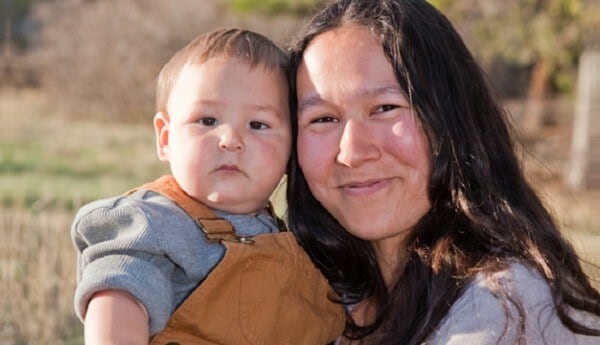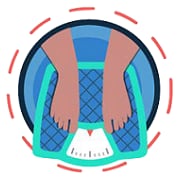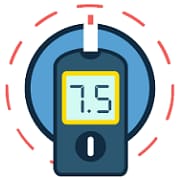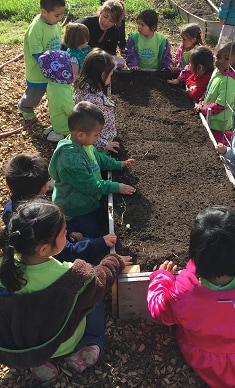Healthy Tribes

The strengths and resilience of American Indian and Alaska Native (AI/AN) communities are rooted in tribal culture and traditional ways of life. However, AI/AN culture and traditions have been severely disrupted by colonialism, loss of land, and policies such as assimilation, relocation, and tribal termination.
These challenges have caused historical trauma and contributed to poverty, unemployment, and poor housing in AI/AN communities. As a result, rates of chronic diseases, injury, and premature death are higher among Native populations than among other racial and ethnic groups in the United States.
CDC’s Healthy Tribes program honors tribal sovereignty and the government-to-government relationship by directly funding federally recognized AI/AN communities. The program funds tribes, tribal organizations, Urban Indian Organizations (UIOs), and Tribal Epidemiology Centers (TECs) to promote health, prevent disease, improve cultural connectedness, and build public health infrastructure.
Among American Indian and Alaska Native adults:

48% HAVE OBESITY
compared to
31% of White adults.

NEARLY 14.5% HAVE DIABETES
compared to
7.4% of non-Hispanic White people.

27% SMOKE
commercial cigarettes
compared to 13%
of White people.
Rates of some cancers, including colorectal, kidney, stomach, and liver cancers, are 37% to 300% higher than rates of those same cancers among non-Hispanic White adults.
Improving Cultural Connectedness and Wellness

For AI/AN people, cultural and traditional teachings and practices are critical to their overall wellness and identity, as well as their sense of belonging. These factors influence the social determinants of health, especially social connectedness. CDC’s Tribal Practices for Wellness in Indian Country (TPWIC) program supports tribal cultural practices that promote wellness and build resilience.
This program funds American Indian tribes, Alaska Native villages, tribal organizations, and UIOs to support the following strategies:
- Connect cultural teachings to health and wellness.
- Support seasonal cultural practices that strengthen health and wellness.
- Develop social and cultural activities that promote community wellness.
- Start and maintain collaborations that strengthen well-being.
- Support intergenerational learning about well-being and resilience.
- Promote traditional healthy foods and traditional and contemporary physical activities.
Examples from the first 3 years of the program include the following:
- More than 670,000 community members have participated in TPWIC program activities. More than 80,000 community members participated in the contemporary or traditional physical activity programs.
- Partnering with the tribe’s culture department led to an increase in cultural activities for one community. More than 140,000 community members participated in community, social, and cultural activities focused on sharing cultural knowledge and practices. These activities promote social and cultural connectedness.
Promoting Behaviors That Help Prevent Chronic Diseases
CDC’s largest investment to improve tribal health is the Good Health and Wellness in Indian Country (GHWIC) program, awarding about $19 million a year. GHWIC is led by Healthy Tribes and is a joint project of six divisions in the National Center for Chronic Disease Prevention and Health Promotion.
GHWIC currently funds 27 tribes, tribal organizations, and UIOs across the United States. All recipients are working to prevent or manage chronic diseases and their risk factors. Twelve tribes and four UIOs are working specifically to:
- Improve nutrition, including breastfeeding.
- Increase physical activity.
- Reduce commercial tobacco use and exposure.
- Prevent and manage high blood pressure and high cholesterol.
Eleven tribal organizations directly fund 91 additional tribes to prevent and manage chronic diseases and their risk factors. They also provide leadership, assistance, and resources to all tribes and tribal organizations in their Indian Health Service area.
Examples include the following:
- Gerald L. Ignace Indian Health Services, Inc. (GIIHS) held its 4th Annual Community Health Fair using a drive-through model to limit contact between staff and participants during the COVID-19 pandemic. Of those participating:
- 13% signed up for support to quit smoking.
- 52% completed a prediabetes assessment, and 44% of those screened were found to be at risk for diabetes and referred for education and follow-up.
- 13% of participants were found to have high blood pressure and were referred to the GIIHS self-management programs.
- Despite the challenges posed by the COVID-19 pandemic, the Albuquerque Area Indian Health Board supported Area tribes, bands, pueblos, nations, and UIOs by providing training and workshops on a variety of chronic disease prevention topics and provided technical assistance to its 12 sub-awardees. As a result, these communities adapted their projects to pandemic conditions and offered virtual cooking and physical activity classes, telephone and virtual check-ins for chronic disease patients, and outdoor gardening and farming activities.
Strengthening Tribal Public Health Infrastructure
Many federal and state agencies are unable to report AI/AN data on diseases and risk factors because of the small size of these populations and widespread race misclassification. To address this lack of data, CDC supports the Tribal Epidemiology Centers Public Health Infrastructure (TECPHI) program.
CDC launched TECPHI to build public health capacity and infrastructure within TECs to improve data collection, analysis, interpretation, and dissemination in ways that respect tribal sovereignty and ownership. This program supports 12 TECs and 1 Network Coordinating Center that manages organizational, logistic, communication, and evaluation activities for the funded TECs. The TEC workforce has increased by 72% from 204 staff in year 1 to 351 in year 3. TECPHI funds have supported 33 TEC internships, with a focus on recruiting AI/AN students.
During the first 3 years, TECs started or expanded data-sharing agreements with federal, state, and local public health authorities to improve the collection and analysis of AI/AN data. Data sharing agreements tripled from year 1 to year 3, with 194 new or expanded agreements in year 3.
These agreements allowed TECs to support and guide the COVID-19 response in tribal and urban Indian communities.
Examples include the following:
- The Albuquerque Area Southwest Tribal Epidemiology Center developed an online database for case investigations and contact tracing and provided access to tribal partners (eg, clinicians, public health professionals, and Community Health Representatives) to improve their own local responses and tracking capabilities.
- The Great Lakes Tribal Epidemiology Center supported the implementation of the Sara Alert system to Area tribes, allowing tribal health clinics to enroll people at risk of a COVID-19 infection or who tested positive, for monitoring and follow-up.
- The Navajo Epidemiology Center provided more than 200 situational reports to the Navajo Nation, and the United Southern and Eastern Tribes TEC provided more than 750 situational reports, to inform decision making for tribal COVID-19 response activities.